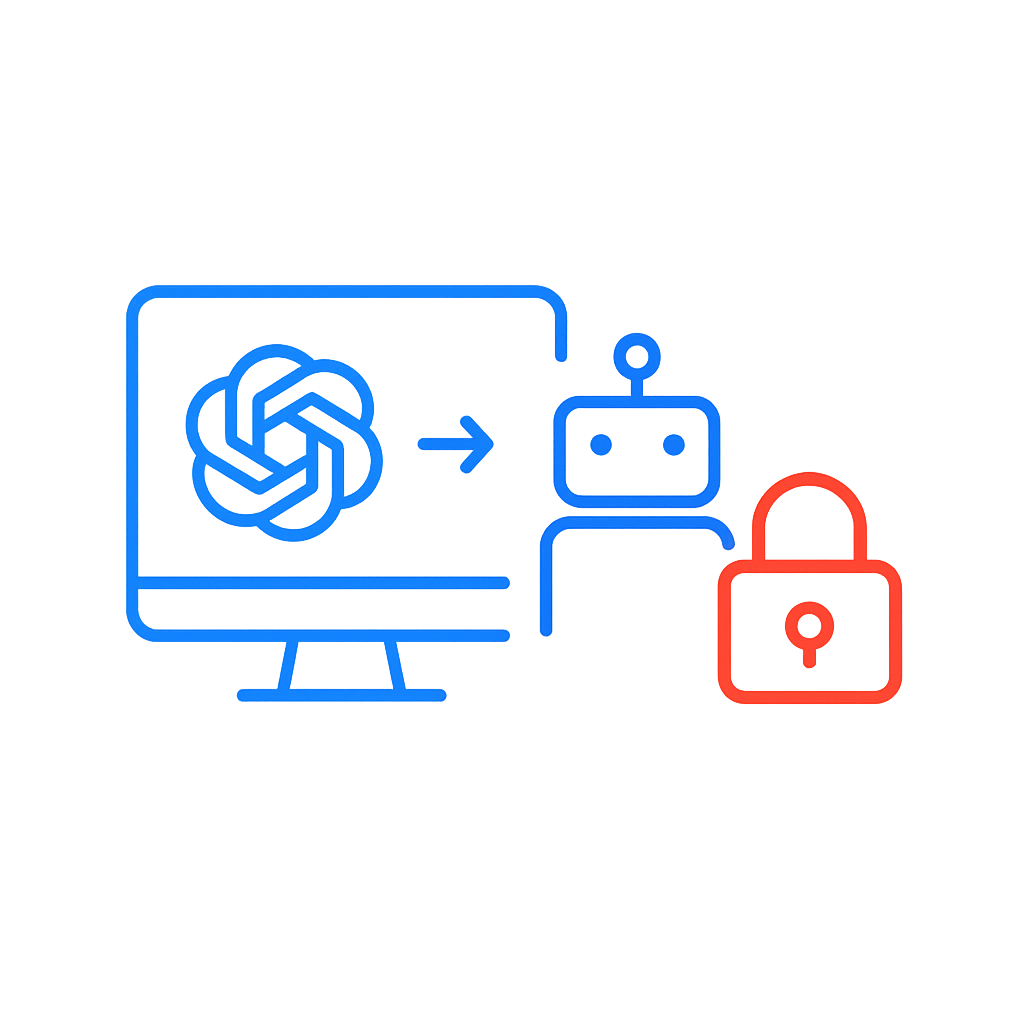ChatGPT Agent Mode: A Powerful Feature—and a Growing Security Risk
OpenAI’s new Agent Mode for ChatGPT is a leap forward in AI usability. It allows users to delegate multi-step tasks—like booking travel, researching vendors, or uploading files—to autonomous agents that can interact with external tools and websites on their behalf. But while this unlocks real productivity gains, it also opens a dangerous new threat vector for enterprises.

Chris Morosco, VP, Head of Marketing at Aurascape
July 23rd, 2025
The Rise of AI Autonomy—and the Risks It Brings
Agent Mode effectively gives AI the ability to act on behalf of your employees, not just assist them. It can log into websites, download or upload content, and even access corporate systems if credentials are shared in a prompt. It’s running in a third-party VM you don’t control, interacting with services you may not even be aware of.
This presents a major challenge for traditional security tools:
- Firewalls and secure web gateways only see outbound traffic to known sites—they can’t inspect what the agent is doing inside ChatGPT.
- DLP and CASBs aren’t wired for real-time inspection of agent behavior or API-level actions.
- And worst of all, most organizations won’t even know their employees have started using Agent Mode until it’s too late.
Why Intentions Matter
At Aurascape, we believe securing AI starts with understanding intentions—the specific capabilities an AI application can perform, like generating text, summarizing documents, executing code, or, in this case, acting as an autonomous agent.
Unlike legacy security tools that treat AI apps as a single “yes or no” decision, we go deeper. Aurascape gives companies the ability to:
- Allow access to ChatGPT and other AI apps with the appropriate license type.
- Identify and control each intention independently, including risky ones like Agent Mode.
- Report on AI activity by intention, giving teams visibility into exactly how AI is being used.
So when a new capability like Agent Mode is released, our customers aren’t caught off guard. They can allow safe usage of ChatGPT while blocking just the risky intention—Agent Mode—until it’s mature, tested, and aligned with company policies.
Security That Keeps Pace With AI
This is why intention-based enforcement is so critical in the AI era. Features like Agent Mode won’t be a one-off. We’re already seeing similar capabilities in other AI tools, copilots, and embedded experiences—many of them hidden inside otherwise trusted apps.
The future of work will be filled with agents executing complex tasks on behalf of users. And with that comes the need for new controls, new visibility, and new thinking around what security really means in an AI-powered enterprise.
Aurascape Customers Are Already Protected
Aurascape was built for exactly this kind of rapid change. Our architecture is real-time, AI-native, and designed to adapt to new app behaviors as they emerge—not months later or many times never fully secured.
If you’re already an Aurascape customer, you’re protected:
- You can block Agent Mode today while still allowing safe use of ChatGPT.
- You’ll get visibility and control of AI activity by intention.
- And you’re ready for the next evolution of AI capabilities—whatever they may be.
Learn More at Black Hat or Visit Aurascape.ai
Agent Mode is just the beginning. The era of autonomous AI agents is here—and the organizations that recognize and prepare for this shift today will be the ones who stay secure tomorrow.
Come see us at Black Hat 2025 booth #6726 or visit Aurascape.ai to learn how we’re helping enterprises secure the future of AI.
Aurascape Solutions
- Discover and monitor AI Get a clear picture of all AI activity.
- Safeguard AI use Secure data and compliancy in AI usage.
- Copilot readiness Prepare for and monitor AI Copilot use.
- Coding assistant guardrails Accelerate development, safely.
- Frictionless AI security Keep users and admins moving.